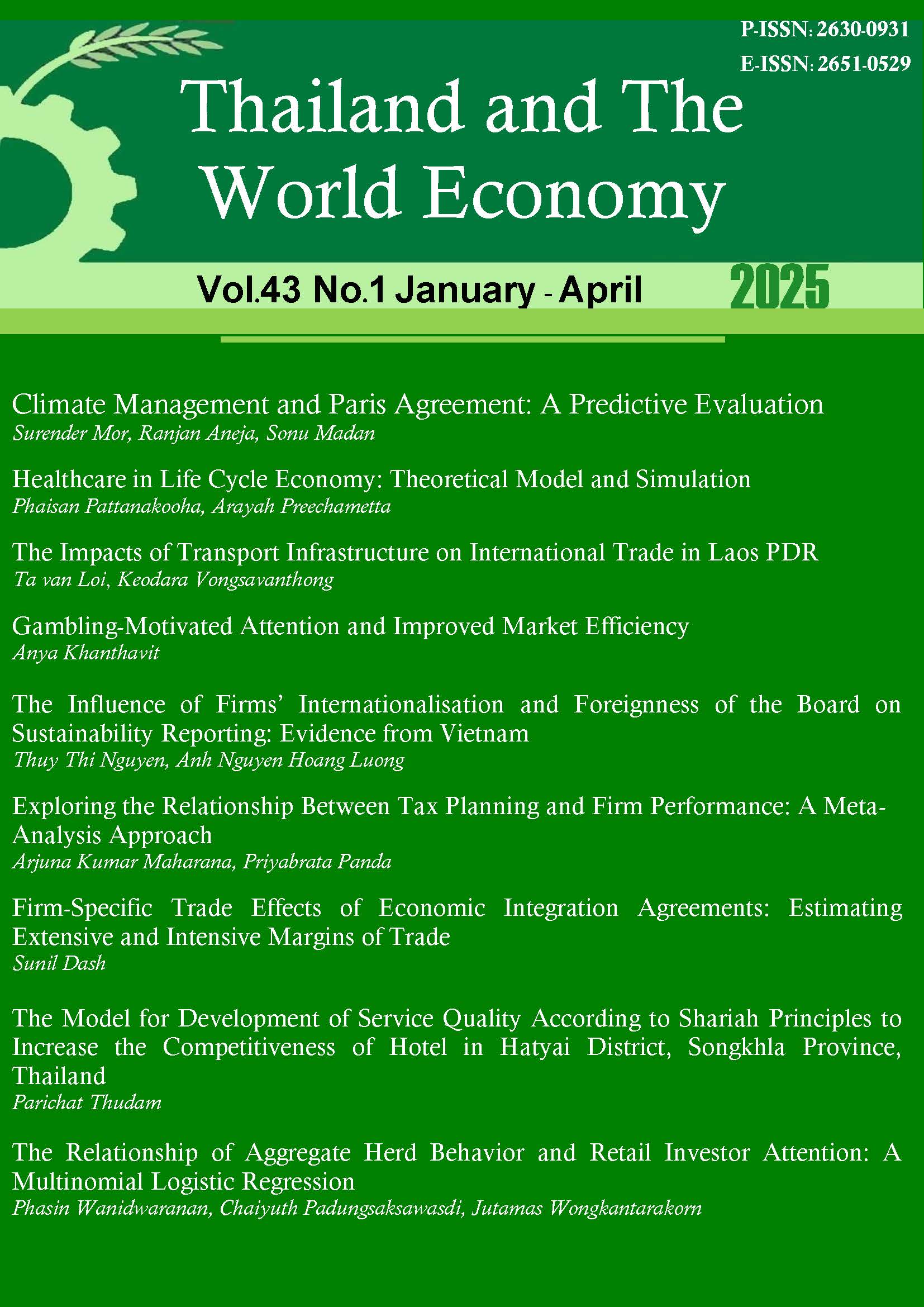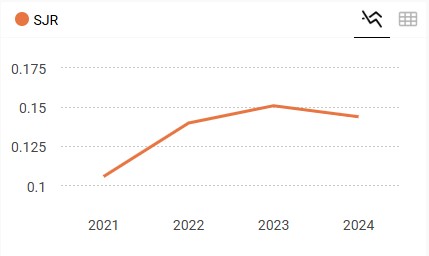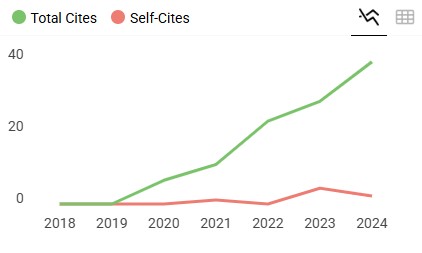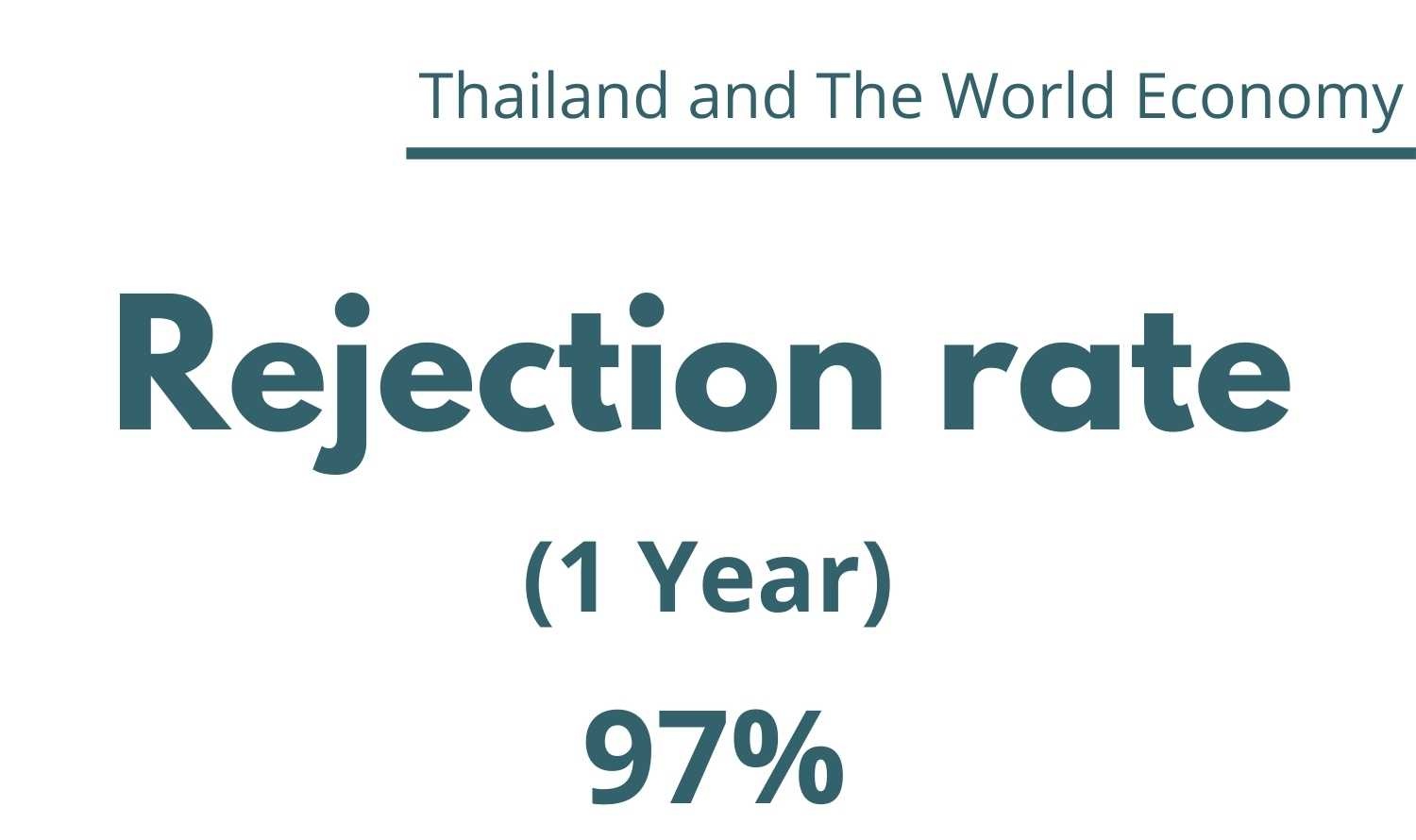The Relationship of Aggregate Herd Behavior and Retail Investor Attention: A Multinomial Logistic Regression
Keywords:
herd behavior, behavioral finance, investor attention, Google search index, Ostrich effectAbstract
This paper investigates the relationship between aggregate market herding and investor attention in seven selected equity markets over the period of 2004-2019. The multinomial logistic regression employed in this study provides a more direct, comprehensive, and straightforward test than other methodologies found in existing studies, as it demonstrates a true occurrence of herding. Investor attention is positively (negatively) related to (anti-)herd behavior, in which information obtained from internet searches is associated with rational and unintentional herding. Thus, internet search improves stock market efficiency. Nonetheless, the role of investor attention is weaker during negative market returns and global financial crisis periods because investors are less attentive to their psychological discomfort explained by the Ostrich effect. The results call for policymakers to gear to the digital economy.
References
Bogdan, S., Suštar, N., & Draženović, B. O. (2022). Herding behavior in developed, emerging, and frontier European stock markets during COVID-19 pandemic. Journal of Risk and Financial Management, 15(9).
Bohl, M., Klein, A., & Siklos, P. (2016). A Markov switching approach to herding. Credit and Capital Markets – Kredit und Kapital, 49(2), 193–220.
Carvalho, J., Jordão da Gama Silva, P. V., & Klotzle, M. C. (2024). Herding and Google search queries in the Brazilian stock market. Review of Behavioral Finance, 16(2), 341-359.
Chang, E. C., Cheng, J. W., & Khorana, A. (2000). An examination of herd behavior in equity markets: An international perspective. Journal of Banking and Finance, 24(10), 1651-1679.
Christie, W. G., & Huang, R. D. (1995). Following the pied piper: Do individual returns herd around the market?. Financial Analysts Journal, 51(4), 31-37.
Da, Z., Engelberg, J., & Gao, P. (2011). In search of attention. Journal of Finance, 66(5), 1461-1499.
Franz, B. (2018). Google Trends: How to acquire daily data for broad time frames. Retrieved from https://medium.com/@bewerunge.franz/google-trendshow-to-acquire-daily-data-for-broad-time-frames-b6c6dfe200e6
Hsieh, S. F., Chan, C. Y., & Wang, M. C. (2020). Retail investor attention and herding behavior. Journal of Empirical Finance, 59, 109–132.
Kunte, S. (2015). The herding mentality: Behavioral finance and investor biases. Retrieved from CFA Institute https://blogs.cfainstitute.org/investor/2015/08/06/the-herding-mentality-behavioral-finance-and-investor-biases/
Lakonishok, J., Shleifer, A., & Vishny, R. W. (1992). The impact of institutional trading on stock prices. Journal of Financial Economics, 32(1), 23–43.
Mondria, J., Wu, T., & Zhang, Y. (2010). The determinants of international investment and attention allocation: Using internet search query data. Journal of International Economics, 82(1), 85-95.
Ngene, G., Sohn, D., & Hassan, K. (2017). Time-varying and spatial herd behavior in the US housing market: Evidence from direct housing prices. The Journal of Real Estate Finance and Economics, 54(4), 482–514.
Padungsaksawasdi, C., Treepongkaruna, S., & Brooks, R. (2019). Investor attention and stock market activities: New evidence from panel data. International Journal of Financial Studies, 7(2).
Peltomäki, J., & Vahamaa, E. (2015). Investor attention to the Eurozone crisis and herding effects in national bank stock indexes. Finance Research Letters, 14, 111–116.
Philippas, D., Philippas, N., Tziogkidis, P., & Rjiba, H. (2020). Signal-herding in cryptocurrencies. Journal of International Financial Markets, Institutions and Money, 65.
Sharma, S., Narayan, P., & Thuraisamy, K. (2015). Time-varying herding behavior, global financial crisis, and the Chinese stock market. Review of Pacific Basin Financial Markets and Policies, 18(2), 1-31.
Sias, R. W. (2004). Institutional herding. The Review of Financial Studies, 17(1), 165–206.
Tantaopas, P., Padungsaksawasdi, C., & Treepongkaruna, S. (2016). Attention effect via internet search intensity in Asia-Pacific stock markets. Pacific-Basin Finance Journal, 38, 107-124.
Vo, X., & Phan, D. (2019). Herd behavior and idiosyncratic volatility in a frontier market. Pacific-Basin Finance Journal, 53, 321–330.
Vozlyublennaia, N. (2014). Investor attention, index performance, and return predictability. Journal of Banking & Finance, 41, 17-35.
Wanidwaranan, P., & Padungsaksawasdi, C. (2020). The effect of return jumps on herd behavior. Journal of Behavioral and Experimental Finance, 27.
Wanidwaranan, P., & Padungsaksawasdi, C. (2022). Unintentional herd behavior via the Google search volume index in international equity markets. Journal of International Financial Markets, Institutions & Money, 77..
Wanidwaranan, P., & Termprasertsakul, S. (2024). Herd behavior in cryptocurrency market: Evidence of network effect. Review of Behavioral Finance, 16(3), 406-423.
Downloads
Published
How to Cite
Issue
Section
License
Copyright (c) 2024 Thailand and The World Economy

This work is licensed under a Creative Commons Attribution-NonCommercial-NoDerivatives 4.0 International License.










